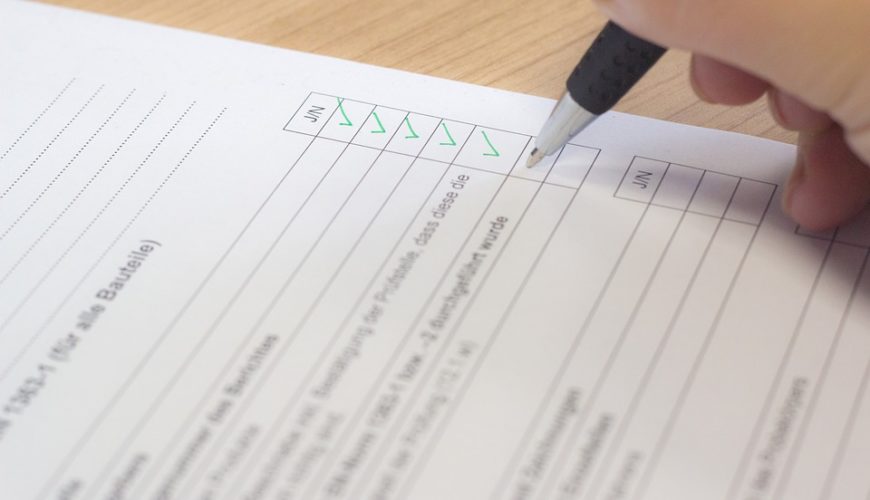Buying a house is a big step, whether it’s your first home, your third, or your tenth. And usually, takes several months to a whole year if ever you’re curious as to how long it takes to buy a house in UK, United States, or whichever country you’re planning to reside in. No matter where you live, buying a house can be complicated and stressful, but knowing the steps beforehand can help alleviate some of this stress and help put your mind at ease. There will still be moments where you feel overwhelmed and in over your head, but that’s all part of the process.
When you decide to buy a home, you’ll be expected to provide certain information. Even if you don’t go through a real estate agent, there are some forms that will need to be filled out and steps taken that you have maybe never heard of.
Before you begin the process of buying a house, take a look at the steps listed out below to prepare yourself for the process and know what to expect.
#1. Check Your Credit Score
As soon as you start thinking about buying a house, you should check your credit score. It will play a vital role in whether you get approved for a decent mortgage and if it isn’t good, you should start working on improving it. You want to have a high score on your report as this will help you get a mortgage with a better interest rate.
Likewise, it’s important to keep your credit score high throughout the whole process. Don’t assume that once you submit your first score report that you’re free to stop caring about your report. Some lenders will perform final credit score checks moments before closing on your mortgage agreement. If the new report comes back lower, they may deny your loan request at the last minute.
#2. Determine How Much You Can Afford
When you begin looking for a house, you’ll be tempted to put an offer down on homes that are much more than you can actually afford. Before you begin your search, it’s important to determine how much you can afford. This can easily be done through an affordability calculator.
Take into account all of your current debt, your annual income, any monthly payments you have already, and the low down payment amount that you can pay. This together should give you a clear idea of the price you can afford.
#3. Get Pre-Approved

Pre-approval can save you a lot of stress and headache in the future once you do find a home that you like. Getting pre-approved isn’t that difficult, either, which makes it well worth your time to do.
To get pre-approved, you’ll have to provide various documents to potential lenders. You don’t have to decide right away which lender you want to go with in order to get pre-approved. At this point, you’re still free to choose between lenders.
As part of your pre-approval, you’ll likely need to provide proof of income and income statements, assets, debts, and current monthly payments such as child support or rent. Lenders will use this information to determine your debt to income ratio and will likely check it again before closing, so make sure to keep it relatively the same from beginning to end.
#4. Start Looking and Placing Offers
Once you’ve determined how much you can afford to spend on a home and you’ve gotten pre-approved, it’s time to officially start your search and begin placing offers. You can do this easily online or through a real estate agent or from Destin FL real estate brokerages that can send you listings within a certain area.
Before you place an offer, be sure to do a comparative market analysis (CMA) to determine the home’s value based on nearby home sales. Your real estate agent can easily do this for you and recommend how high of an offer to place. You can also check homes for sale in Ggraham WA, if you want to buy home in WA.
#5. Get a Home Inspection
If your offer is accepted, you may be tempted to skip a home inspection, especially in a housing market where homes go off the market so quickly. However, it’s highly recommended that you get one as home inspections can reveal potential problems in a home that you might not otherwise notice.
A home inspection will provide you with a much clearer idea of how structurally fit a home is. It will also give you negotiating power. If a home inspection reveals a major safety issue such as a failing roof or some other non-cosmetic complication, you can request the seller take care of the problem or reduce the price of the home.
Home inspections give you an easy way out if any major problem is detected after your offer has been accepted. You won’t be met with any unpleasant surprises a week or two after moving in that could have otherwise been avoided.
#6. Secure Your Mortgage
Even with a pre-approval, you’ll need to complete the mortgage process by officially submitting your mortgage application. As part of the official submission, you’ll get an appraisal done on the home to determine if your overpaying, underpaying, or paying exactly what the home is worth. The lender will often make appraisal arrangements for you.
Once the appraisal has been done and your mortgage is approved, you’ll be cleared to close on your home!
#7. Closing and Final Paperwork

There’s a lot of paperwork with buying a home so be prepared to spend a few hours going through it before you’re officially finished with the buying process. You’ll want to do one last walk through of the home before closing just to make sure all requested repairs have been made and the home looks the same as before.
After signing all the necessary documents, you’ll likely have to wait a couple of days as your lender sends the money to the seller. Once this is done, though, you’re free to move into your new home!
Home, Sweet Home
The process of buying a home is often filled with a lot of questions and stress no matter how many times you’ve done it. It helps to know what you’re walking into beforehand, though, and after reading through this quick guide, you’re more than ready to take on the challenge of buying a house!




